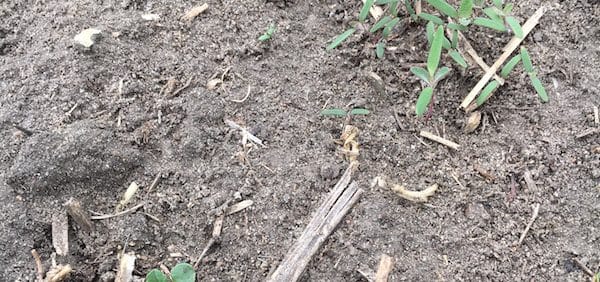In general, early is the best for herbicide timing. A few early weeds emerging before or at the same time as canola plants are much more damaging to yield than lots of weeds emerging after canola plants are established. Those early-emerging weeds tie up nutrients and moisture valuable to the crop and can also out-compete the crop for sunlight if their leaves cover canola seedlings. However, in some situations, waiting may be the better choice.
Three scenarios
You scout and weed counts are very low. Waiting for more weeds might be a risk worth taking or, at least, this may not be the top-priority field. Do other fields first. If weeds remain well behind the crop, they will not cause a significant yield loss. Scouting tip from a farmer: If you don’t think you have weeds coming, throw a loonie out the window of the truck and go look for it.
Dry conditions have slowed all plant growth – crop and weeds. You want weeds actively growing in order for herbicide uptake and efficacy. Note that if waiting for rain to relieve drought-like conditions, growth of all plants will be rapid after a rain. That means all crops may need to be sprayed at once. Scout to identify priority fields.
Pre-seed burnoff was effective and the crop is ahead of the weeds. In that case, wait to see when (if?) an in-crop application is needed. Canola is an aggressive competitor once established and ahead of the weeds. Research suggests that weeds emerging seven to ten days after the crop will not cause significant yield loss. Buckwheat and cleavers however may be weeds that cause problems beyond yield loss, like wrapping at harvest or dockage. These may be weeds to target with a late-window spray, but don’t let them grow too big to control.
